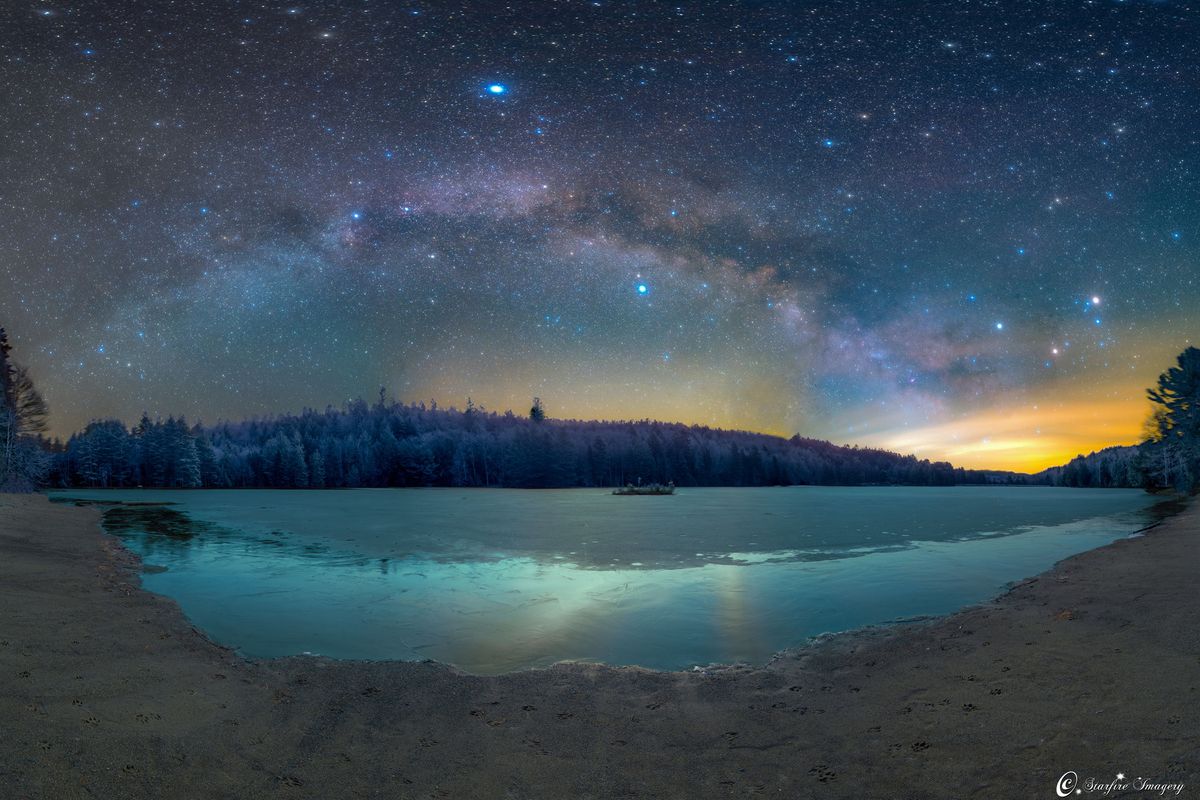
What's at the Center of the Milky Way?

If you look up on a dark, clear night, away from city lights, you may see a wide band of faint light stretching above you, stiller than a cloud and glittering with densely packed stars. Translated from the Ancient Greek as "Milky Way" for resembling spilled milk on the sky, that band of light is the center of our galaxy.
At its center, surrounded by 200-400 billion stars and undetectable to the human eye and by direct measurements, lies a supermassive black hole called Sagittarius A*, or Sgr A* for short.
The Milky Way has the shape of a spiral and rotates around its center, with long curling arms surrounding a slightly bulging disk. It's on one of these arms close to the center that the sun and Earth are located. Scientists estimate that the galactic center and Sgr A* are around 25,000 to 28,000 light-years away from us. The entire galaxy is around 100,000 light-years across.
We revolve around the center every 250 million years.
A supermassive black hole is the largest type of black hole in a galaxy, with a mass millions of times that of our sun . Though it can't be imaged directly because black holes pull in all light, scientists have inferred its presence by looking at the speed and motion of stars and matter close to the galactic center. They have inferred that the movements are influenced by the gravitational pull of a black hole.
No one knows how the black holes at the center of galaxies form, but some suspect that they may begin as a cluster of smaller black holes that merge, or as a smaller black hole that consumes enough matter to become a supermassive one.
Original article on Live Science.
Sign up for the Live Science daily newsletter now
Get the world’s most fascinating discoveries delivered straight to your inbox.












